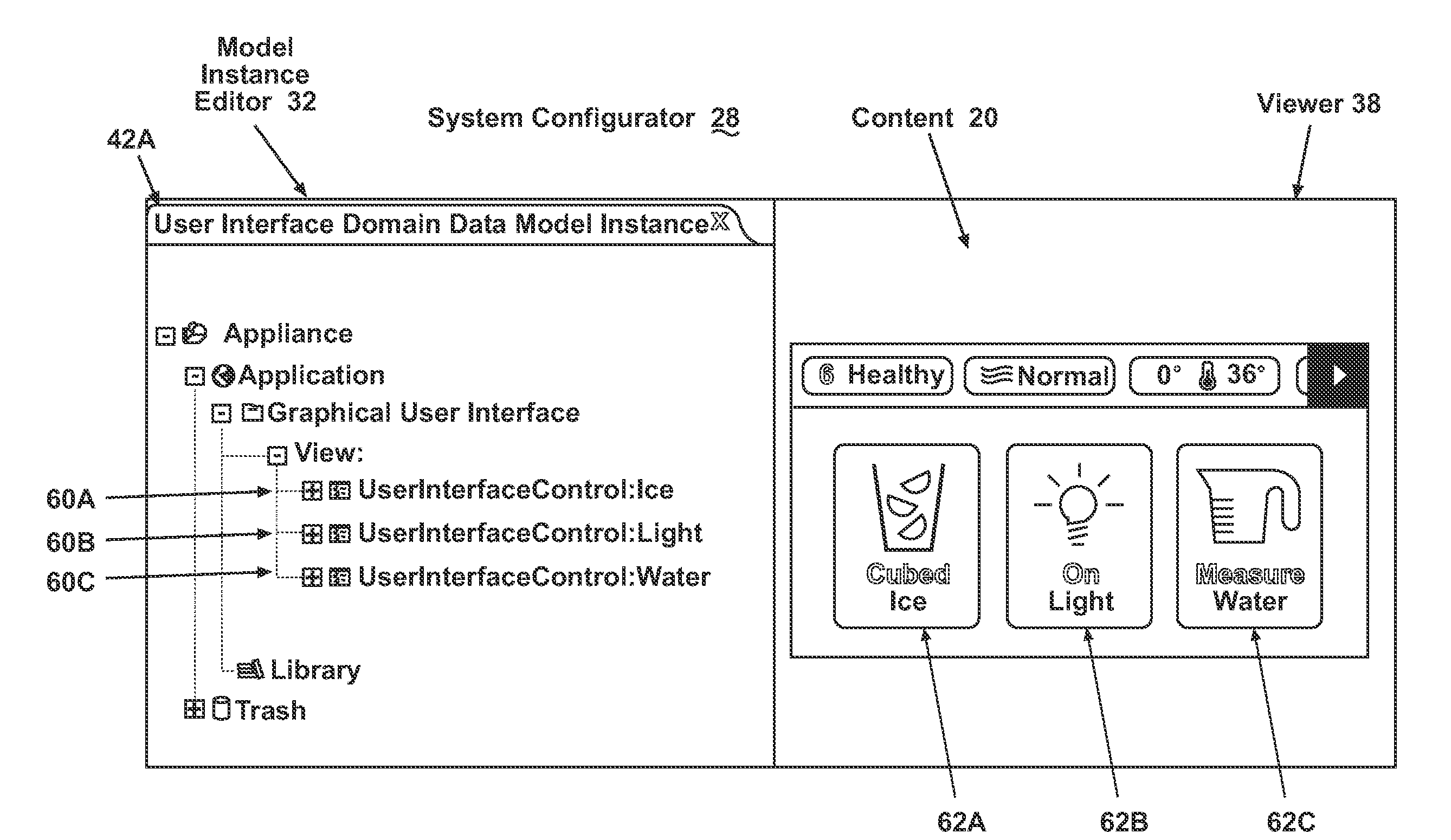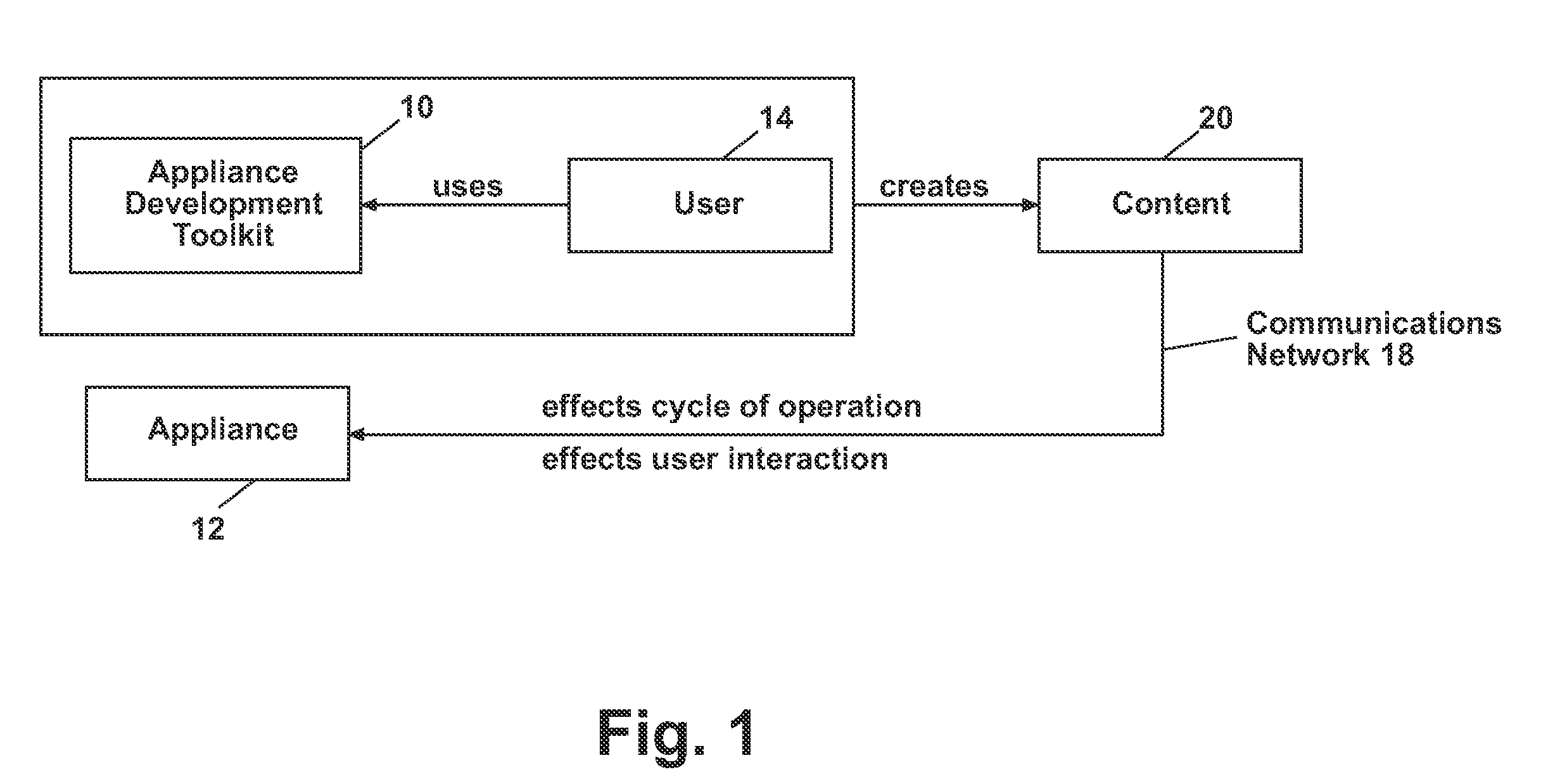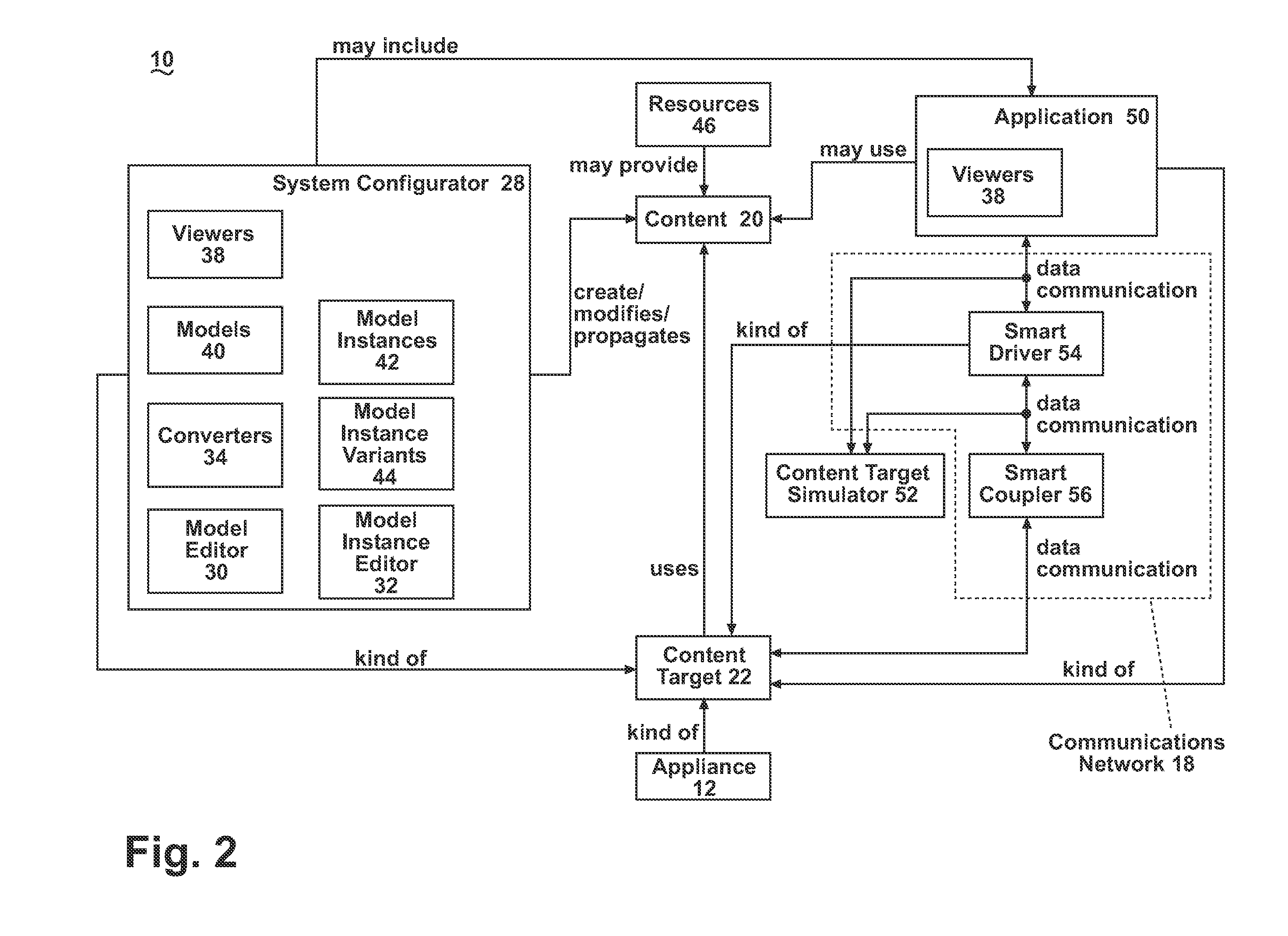Appliance with animation framework
an animation framework and application technology, applied in the field of appliances, can solve the problems of not being able to adapt to the communication between additional external/internal components, inability to modify, and inability to couple additional external components or additional internal components to the appliance to expand the capability or function of the applian
- Summary
- Abstract
- Description
- Claims
- Application Information
AI Technical Summary
Benefits of technology
Problems solved by technology
Method used
Image
Examples
first embodiment
[0134]Looking now to FIGS. 30-42, in a first embodiment, a hierarchy of objects starts with a single root object that we can call “root.” The root object has 0 to n children and the children may be of different types (i.e., type 1 and type 2). In turn, the 0 to n children may also have children. Therefore, an object A that is a child of root and has children of B and C is considered to be both a child and a parent and can be referred to either as a child or a parent depending on the context. Except for the root, all objects in a hierarchy are a child and those with children are also parents. The root is a parent unless it has no children.
[0135]The first embodiment is a simple example of an implementation of a hierarchy wherein the parent child relationships are direct relationships. In a direct parent child relationship, the parent includes an identifier identifying each of its children. Therefore, the parent cannot be decoupled from its children because it comprises the identifiers...
second embodiment
[0136]A second embodiment exemplifies an indirect parent child relationship wherein neither the parents nor the children include identifiers of the other. Instead, a holder object contains the identifiers of both. For example, object Q is a holder and contains an identifier of object A, object B, and object C, wherein object A is of type 1, object B is of type 2 and object C is of type 3. Objects A, B, and C do not have access to the identifiers of one another. The primary responsibility of object Q is to contain identifiers for objects A, B, and C thereby establishing that there is some type of relationship between objects A, B, and C. There are a number of ways that the nature of the relationship between A, B, and C can be ascertained. In a first example, object Q has access to information defining the possible relationships between objects of type 1, 2, and 3. In this example the information would define a first relationship definition between objects of type 1 and type 2 as bein...
third embodiment
[0137]A third embodiment exemplifies an alternate approach for creating an indirect parent child relationship wherein neither the parents nor the children include identifiers of the other. In this embodiment, multiple holders are used to create a holder hierarchy. For example, object Q is a holder and contains an identifier for object A. Object Q also contains an identifier for a second holder object X. Object X contains an identifier for object B. Holder object Q is a parent holder with respect to holder object X because holder object Q contains the identifier to holder object X. Therefore the relationship between object A and object B be can be inferred as a parent child relationship when observed from the perspective of holder object Q and holder object X because holder object Q are in a direct parent child relationship. In this case, object A and object B are in an indirect parent-child relationship.
[0138]A forking element includes a hierarchy having a first parent object with a...
PUM
 Login to View More
Login to View More Abstract
Description
Claims
Application Information
 Login to View More
Login to View More - R&D
- Intellectual Property
- Life Sciences
- Materials
- Tech Scout
- Unparalleled Data Quality
- Higher Quality Content
- 60% Fewer Hallucinations
Browse by: Latest US Patents, China's latest patents, Technical Efficacy Thesaurus, Application Domain, Technology Topic, Popular Technical Reports.
© 2025 PatSnap. All rights reserved.Legal|Privacy policy|Modern Slavery Act Transparency Statement|Sitemap|About US| Contact US: help@patsnap.com



